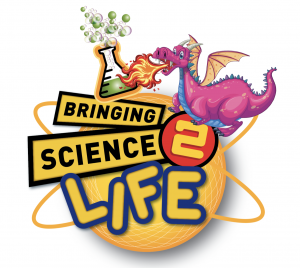The Crazy Weather Show
Join Scientific Sue on yet another climatic journey of scientific discovery!
A Bit about the Show:
Weather can be extreme, scary and devastating and the effects of any change in climate can make weather patterns even scarier. No better topic for Scientific Sue to use her drama skills to entertain you!!
We all know about tornados but did you know fires can also spin! Sue will demonstrate how fire tornados can be formed and explain why the eucalyptus tree is potentially one of Australia’s fire brigades’ biggest enemies.
This show has given Scientific Sue a few engineering challenges too. High winds can knock down bridges; sometimes these bridges are the life line for remote villages – This happened during storm Maria in 2017! Lots of volunteers will be needed to help build a pulley system out of balloons to show how the stranded villagers helped solve the lack of food and water problem!
The consequences of any changes to our climate could lead to intense droughts, storms, heat waves and rising sea levels – we don’t want to alarm you we want to scare you! Scare you with crazy, innovative science demonstrations which will answer many questions the children my have around the topic of weather and climate.
Warning: this show is at times educational however, might be occasionally highly fictional, and you should only watch it if you want to enjoy a creatively shocking but fun-filled experience.
Facts:
Our weather systems are changing and so is our world. Symptoms of climate change are all around us: extreme weather, diminishing sea ice, year after year record-breaking warmth, drought, fires, and stress to ecosystems.
Key Themes
- Greenhouse gases: the show focuses on water vapour, carbon dioxide and methane
- We need greenhouse gases to keep our planet livable by holding onto some of Earth’s heat energy so that it doesn’t all escape into space. This heat trapping is known as the greenhouse effect.

- Global warming: Just as too little greenhouse gas makes Earth too cold, too much greenhouse gas makes Earth too warm. Over the last century, humans have burned coal, oil, and gasoline in our cars, trucks, planes, trains, power plants, and factories. Burning such fossil fuels produces CO2 as a waste product. Putting so much new CO2 and the release of extra methane into the air has made Earth warmer.
- Rising sea levels
- Wild fires
- Deforestation
- Flooding
- Basics of the formation of wind and ocean currents
- Hurricanes
- Solutions
The science behind weather and climate change is extensive and complicated. The aim of this show is to give you an introduction to a few key themes which will give a good basis for project work and class discussions.
Rather than delving into the specifics of greenhouse gases, global warming, or climate change, the drama sketches will focus on how wind and ocean currents are formed and they will underscore how heating affects ice, causing it to melt, and how water expands when heated, contributing to rising sea levels.
Moreover, heated air expands enabling the atmosphere to retain more water vapour resulting in heightened humidity in certain regions of the world. This increased moisture in the atmosphere translates to heavier rainfall and snowfall i.e. more rain and snow is dumped in a relatively shortened period of time!
Deforestation also has huge impact in regions which are experiencing larger rainfall which then leads to consequent flooding.
A Little bit of extra Science!
Carbon is the backbone of life on Earth. We are made of carbon, we eat carbon, and our civilisations—our economies, our homes, our means of transport—are built on carbon. We need carbon, but that need is also entwined with one of the most serious problems facing us today: global climate change.

This diagram of the fast carbon cycle shows the movement of carbon between land, atmosphere, and oceans. Yellow numbers are natural fluxes, and red are human contributions in gigatons of carbon per year. White numbers indicate stored carbon.
Key points:
All animals produce methane, water vapour and carbon dioxide.
The combustion of fuels also produces water vapour and carbon dioxide.
The burning of fossil fuels: coal, oil and methane gas (found in the earth) plus the release of methane which is found alongside coal and oil – over the last 150 years has off-set earth’s natural carbon cycles leading to an increase of just over 1 degree Celsius.
Plants and trees use water and carbon dioxide to grow and release oxygen in the process photosynthesis.
Deforestation means we reduce the amount of oxygen in the atmosphere and end up with more water vapour and carbon dioxide in the air.
At least half of the oxygen we breath comes from plankton in the oceans – Plankton are the diverse collection of organisms found in water (or air) that are unable to propel themselves against a current (or wind).
Solutions:
Save energy at home
Reduce, reuse, repair and recycle
Reduce the use of fossil fuels
Stop oil companies from deliberately releasing methane into the atmosphere
Reduce the amount of methane in the atmosphere
Walk, cycle or take public transport
Eat more vegetables – and throw away less food
Protect forests and plant more trees
Protect the oceans
Invest more in renewable energy sources such as solar, wind, geothermal etc.



